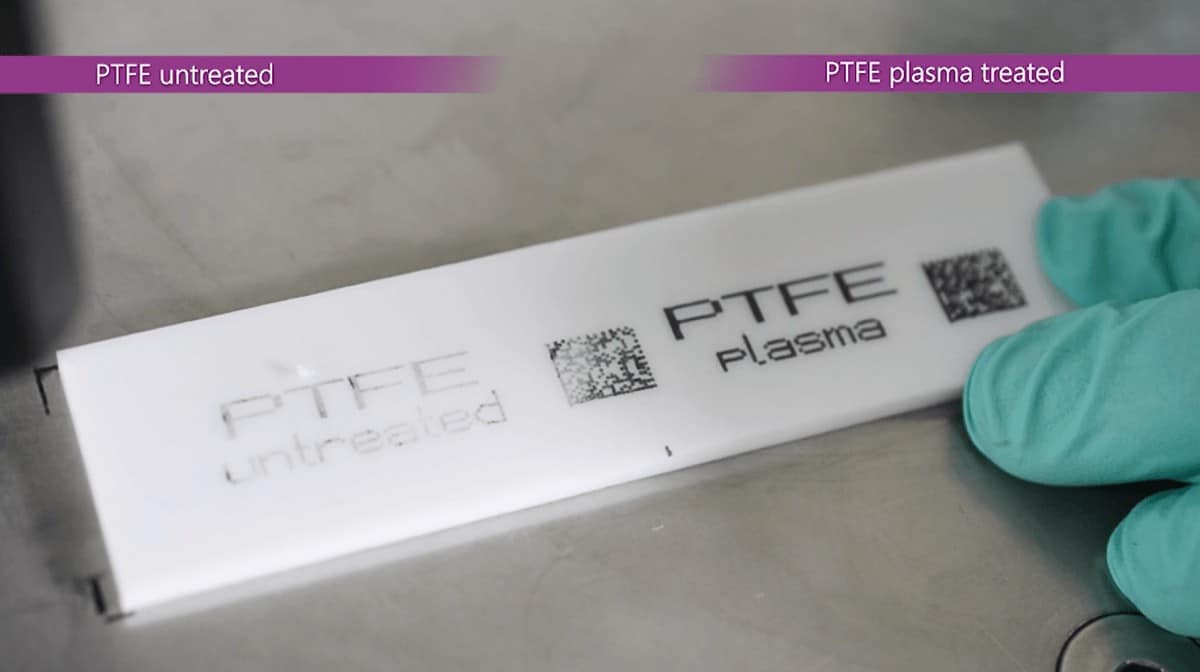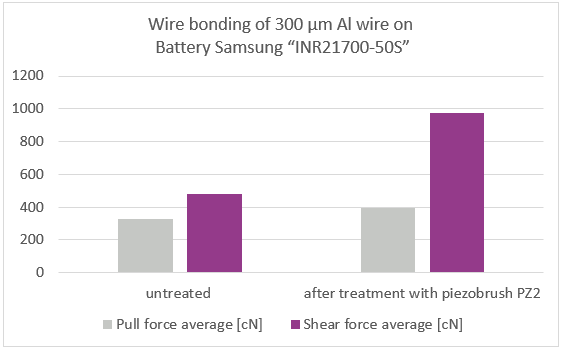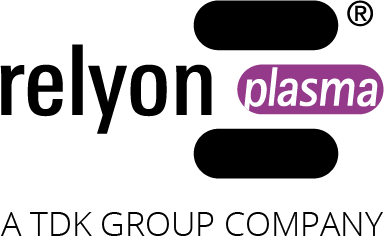Cold plasma in electronics industry – the new plasma handheld device piezobrush® PZ3
Whether for bonding or marking of plastic components, wire bonding processes on metallic contact pads or the production of energy storage devices: Adhesion plays a decisive role for product quality and process stability in many areas of the electronics industry. Plasma is increasingly being used in the electronics industry to optimally prepare the surfaces of a wide variety of materials for such adhesion processes. This technology enables selective treatment of functional surfaces on plastics, metals or composites to improve a number of subsequent processes. While conventional atmospheric pressure plasma systems must be permanently integrated into systems with appropriate gas supply, extraction and safety concepts, the cold plasma handheld device piezobrush® PZ3 offers the possibility of uncomplicated and manual optimization of surfaces.
Improved adhesion processes on housing parts
A wide variety of materials and material combinations are used to enclose electronic assemblies and devices, such as aluminium, standard plastics like ABS, PC, PA or PP, but also fibre-reinforced composites. In addition to creating a functional interface and, in the end user area, an attractive appearance, the housing serves primarily to protect the electronics from external influences and contamination. Accordingly, a solid bonding of housing parts is of extreme importance for the quality of the entire product. The surfaces of the typically used housing materials are often repellent to dirt and humidity, but also to adhesives, printing inks or varnishes. In many cases this leads to insufficient adhesion of the bonding of housings or to inferior quality of labelling or design elements. These problems are primarily due to the insufficient wettability of the used materials. By treating the surfaces with cold atmospheric pressure plasma, the wettability can be improved in a targeted manner. This can be demonstrated by analysing the contact angle between a test liquid, such as water, and the plastic surface: The smaller the contact angle, the flatter the drop and the better the wettability (see figure).

High wettability is a necessary parameter for an optimized subsequent process such as bonding. Thanks to the compact and inexpensive Piezo Direct Discharge (PDD) technology® used in the piezobrush® PZ3 handheld device, start-ups and smaller companies can now afford to improve the surface properties of housing parts using plasma. For example, this is used at Animal Care Technologies GmbH to securely bond the two parts of the housing of the specially developed Colicheck. The Colicheck is applied as a cuff to the horse’s leg to track the horse’s state of health and detect and report early symptoms of colic. As a leg cuff the housing of the Colicheck has to be very robust and well bonded. With the plasma technology of relyon plasma, professional adhesive joints can be achieved for the housing.
„Only through the use of the relyon plasma piezobrush PZ2 have we succeeded in producing a reliable and durable bond between our plastic housing parts. Both the ABS material of the plastic shells and the TPE intermediate ring show an almost inseparable bond with the used polymer adhesive due to the plasma treatment. Without the plasma treatment with the piezobrush, a sufficient adhesive bond for our quality claim would be impossible.“, said Doris Hoffmann of Animal Care Technologies GmbH.
Cold plasma technology
Conventional plasma systems work either in the low-pressure range and are accordingly designed as chambers which are equipped with components, pumped off and emptied again after plasma treatment. Alternatively, there are also inline-capable plasma solutions under atmospheric pressure, which, however, require integration efforts, such as the installation of a suction unit and the implementation of a process control to prevent over-treatment or temperature damage of substrates such as plastics. In addition, direct contact with the plasma flame can endanger the health of employees.
The piezobrush® PZ3 plasma handheld device is much easier to handle. The plasma discharge generated here using PDD Technology® does not involve significant heat loss and therefore requires only 18 W of power. This makes the piezobrush® in manual operation harmless for the operator and also for temperature-sensitive materials, such as thin plastic foils. Also with regard to the purchase costs, the piezobrush® represents much lower hurdles compared to conventional systems and is therefore also suitable for start-ups or small series.
The reason for the compactness and efficiency of the piezobrush® PZ3 lies in its pluggable exchangeable modules: The heart of the piezobrush® PZ3 is the CeraPlas piezoelectric plasma generator from TDK. The approx. 7 cm long component transforms a small input voltage highly efficiently by several dimensions so that a cold plasma can be ignited under room conditions without the addition of special gases. This plasma does not exceed a temperature of 50°C and is a mixture of highly reactive ions, radicals and neutral particles. The oxygen-based reagents in particular are particularly effective for the functionalization of plastics. By treating typically hydrophobic plastics with the piezobrush® PZ3 and the module Standard, these oxygen species accumulate as polar end groups on the molecules of the surface. These act here as functional “anchors”, which can form stable bonds to adhesives or inks, for example (see figure).

The piezobrush PZ3 can also be used for ultra-fine cleaning of metals or semiconductors. However, this is only possible by using the module “Nearfield” for conductive substrates. Blickfeld GmbH, for example, uses the piezobrush® to flexibly and easily modify the surface properties of various materials, such as semiconductor components. In this way, they are optimized for subsequent processes. The company has developed its own LiDAR technology based on patented silicon MEMS mirrors and commercially available components.
Process optimization in joining technology
The cold plasma technology of the piezobrush® PZ3 can improve processes not only for housings and components. The handheld device is also used in joining technology. For example, the insulating sheathing of cables is often a challenge, not only during assembly, but also during marking. A wide variety of plastics are used here, whose surfaces have a repellent effect on adhesives or printing inks. Typical materials are for example PE, PVC, PC, PTFE (Teflon®) or PI (Kapton®). Adhesion problems can occur in processes such as bonding, encapsulation or overmoulding of connectors, which may only become noticeable under temperature or alternating loads. These problems can occur on the cable sheathing side, but also on the connector material side. This is minimized by plasma pre-treatment of the corresponding surfaces.
Even when marking the cable sheathing, e.g. by means of inkjet printing processes, the printed images on these special materials may be of inferior quality and the marking may be rubbed off when the cable is wrapped. An example print on a PTFE substrate shows that even on this highly repellent material, a standard inkjet ink adheres much better to the plasma-treated side of the test coupon (see figure).

Not only for liquid binding partners such as adhesives or inks, a pre-treatment with the piezobrush® of the surface to be wetted can provide a decisive increase in adhesion. In the field of wire bonding, the company TPT Wire Bonder GmbH & Co. KG was able to more than double the shear force value of wire bonding on the contact surfaces of batteries by treating them with the piezobrush® and the associated module “Nearfield” (see figure).

Plasma-supported production processes for energy storage systems
Apart from improved contacting of batteries, some processes can also be optimized in the production of other energy storage devices using cold atmospheric pressure plasma. For example, plasma technology helps to improve the wetting of bipolar plates with liquid electrolytes, as used in fuel cells. In principle, the piezobrush® PZ3 handheld device can be used to selectively modify the wetting properties of surfaces. Especially for energy storage systems with liquid electrolytes there is still a lot of research potential in the area of internal structure. As far as the external area of such cells is concerned, the quality of the housing is once again a key factor: These must meet the highest requirements in terms of robustness and tightness, a requirement that can be easily met with the help of cold plasma technology.
Summary
In the presented selection of applications of the piezobrush® PZ3 for plasma in electronics industry, the wide range of possible uses for its compact cold plasma technology becomes clear: From adhesion processes, such as bonding or printing on standard but also special materials, to applications in wire bonding, to research and development projects, such as in the field of energy storage. The easy handling and intuitive operation make the piezobrush® PZ3 the ideal tool for plasma pre-treatment from pre-development to the production of small series.




